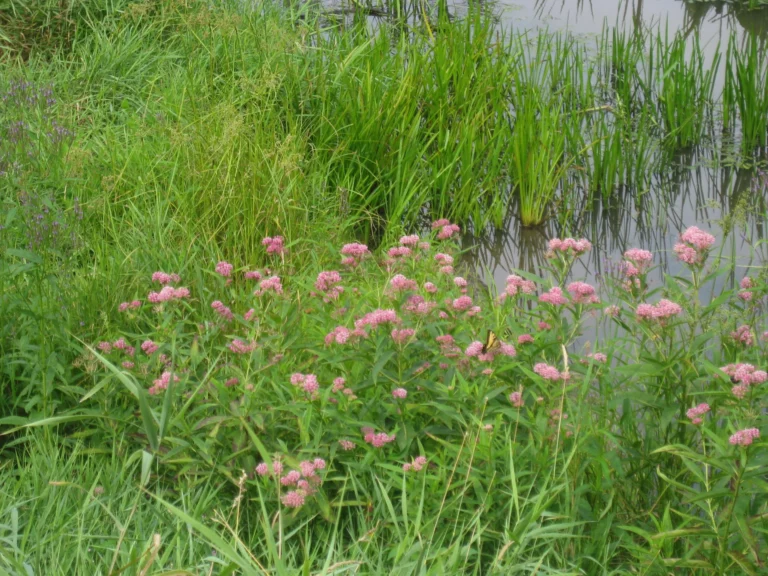Wetland conservancy is making a comeback. For our country’s first two centuries, wetlands across the United States were viewed as a waste. As a result, the U.S. lost an estimated 53 percent of its total wetland area from the colonial times through the 1980s.
Wetlands were dried, drained and eliminated as the country expanded, which was due to widespread belief that they were nothing but foul-smelling, pest-infested bogs of no redeeming quality.
That belief, of course, was incorrect. As scientists further studied wetlands and wetland conservancy in the latter half of the 1900s, research showed these ecosystems were actually exceptional for the stability and biodiversity of the local environment.

We now know the variety of species found in wetlands is so significant, the EPA considers their ecological productivity on par with rainforests and coral reefs. On top of that, wetlands provide vital water filtration for the local watershed. They also take on large amounts of surface-water runoff, which mitigates the risk of flooding.
Wetland Conservation Laws — A Step in the Right Direction
Thankfully, opinions toward wetlands changed and legislators passed laws to protect these ecosystems. That started with the Clean Water Act (CWA) in the early 1970s, which established protections for wetland areas by requiring permits for corporations or municipalities wanting to develop land commercially. It also introduced a system to track water quality to monitor whether specific water systems were improving in the years following the legislation.

The CWA was a start, but many states aimed to be more proactive with wetland management and conservation than the federal requirements. The CWA doesn’t protect some man-made wetlands despite their impact on local watersheds, and also doesn’t manage issues related to groundwater pollution. The states and municipalities that had the most to lose then took it upon themselves to enact more stringent laws to prevent wetland loss and improve biodiversity conservation. By the 1990s, over half the states in the U.S. had additional legislation to further protect their wetlands, or protect the wetlands that weren’t covered by the original CWA. States in the eastern half of the country led the way, with Connecticut, Massachusetts, Rhode Island, New York, New Jersey and Florida all passing laws the USGS considered significant at the time.
Funding Opportunities for Wetland Protection Are Growing More Popular, Especially in the Eastern U.S.
Today, nearly every state has laws in place to protect their wetlands and local watersheds beyond what is required by the Clean Water Act. Several new wetland conservation projects in the eastern U.S. are going into place in the near future, and more could be ahead as the general public grows more environmentally conscious. Included below is a recap of each state’s recent projects:
- Delaware’s Department of Natural Resources ran a summer-long program in 2021 encouraging non-profits and other organizations to submit proposals for projects that will improve water quality and stormwater management. Grants up to $75,000 will be awarded.
- Kentucky began the design phase of a major restoration project for streams near the Ohio River in August 2021
- Maine’s Natural Resource Conservation Program announced that $2.4 million will go toward 11 different projects to improve and restore the state’s wetlands
- Maryland began a Resiliency Through Restoration Initiative, offering community grants, technical assistance, and education about local wetland conservancy efforts
- New York started its “Wetlands Management Framework” in New York City, a 30-year project to replenish local wetlands after decades of mistreatment
- Ohio announced a $5 million grant program dedicated toward revitalizing the watershed in the Ohio River basin
- Pennsylvania began a $3.5 million project to protect and restore 1,078 acres of wetlands and 104 acres of grasslands
- South Carolina awarded five counties $1 million each to five wetland conservation projects along the state’s coast
- Virginia established new restrictions against altering or building along shorelines on the Atlantic Coast
- Wisconsin is revamping their permitting system to allow for voluntary projects approved by the state’s Department of Natural Resources
These programs are just a snapshot of the ample opportunities available to organizations around the country today. If your state isn’t listed above, it’s still likely there is a program to maintain and restore wetlands where you live. A quick internet search or call to your local or state government should point you in the right direction.
Using New Funding Opportunities for Wetland Restoration and Conservation Projects
With a populace that’s more aware of its environmental impact than ever, wetland restoration projects are likely to grow in popularity as pressure on politicians ramps up. Right now is the ideal time for municipalities, non-profits, homeowners associations, corporations or any other organizations to plan for a project dedicated to protecting their local wetlands and watershed. Local, state and federal governments are listening to proposals around the country. Significant dollar amounts are being allocated to these crucial projects, and it’s likely we’ll continue to see more opportunities for grant money into the future. To learn more about grants available in your home state or city, the EPA compiled an expansive list of current projects — both regulatory (projects required by federal or state law) and voluntary — along with information on how to apply for available grants.
If you’re interested in developing a wetland restoration project, the experts at Ernst Seeds are here to help. We’ve developed seed mixes specifically made for wetland conservation areas that will maximize water filtration rates and minimize stormwater runoff. Our work at Ernst is dedicated to projects such as these; we’d love to help you start one of your own.


